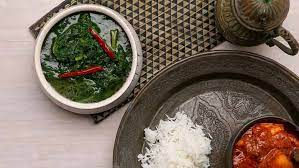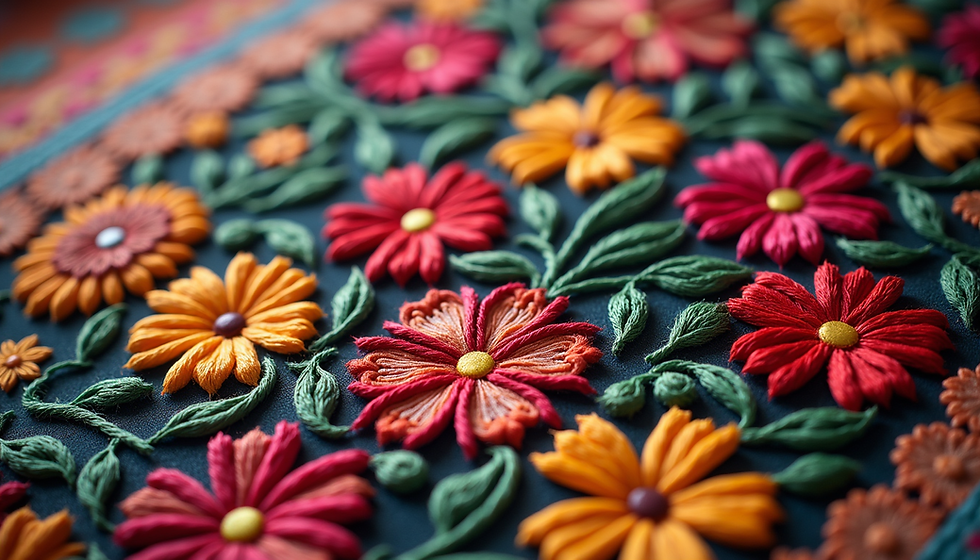- JKAF
- Oct 27, 2023
- 5 min read
Kashmiri Saag or Haak: a Quintessential part of the Cuisine of Jammu and Kashmir

By Arka Chakarborty
Food is seen as one of the most important indicators of human culture. The culinary culture of a particular region reflects the geographical and climatic realities, resource availability, interregional and intercommunity interactions, religious beliefs and hygiene practices of the communities which inhabit that region, among other factors. Naturally, the kind of culinary culture prevalent differs to various degrees across regions and communities. Jammu and Kashmir is no exception. The culinary arts are an essential part of the splendid culture of Jammu and Kashmir as a whole, exhibiting the marvelous results of centuries of interactions and innovations. The mouth-watering dishes of Jammu and Kashmir have crossed regional boundaries and many of J&K’s unique delicacies have now become famed across India. Rogan Josh, Aab Gosht, Goshtaba, Kashmiri Pulao and Kashmiri Aloo Dum are some of the dishes that have won the hearts and minds of millions. The light, soupy and tasty haak seems to be one of those gems that should definitely grace the global palate.
The Kashmiri word ‘haak’ literally means ‘greens.’ The Hindi word ‘saag’ is often used as an equivalent for haak. Iqbal Ahmed (2022) has clarified that the word ‘saag’ broadly refers to a range of green, leafy vegetables. ‘Haak,’ however, refers to one kind of vegetable in particular- collard greens. Collard greens are a part of the cruciferous family of vegetables (Bless My Food By Payal; Lifestyle Desk, 2023). While collard greens, known simply as haak, seem to be the first choice in preparing the haak recipe, they are far from the only vegetables that can be used to prepare the dish. Monji haak (kohlrabi greens), mujj haak (radish greens) and vopal haak (dandelion greens) are also used to prepare the veggie delight. Spinach, the outer darker leaves of cabbage, beet greens and even kale can be used to prepare haak (Yummefy). A dish typically associated with the Kashmiri Pandit community, haak is nevertheless enjoyed by the general Kashmiri population as a whole (Yummefy; Mehra) due in no small part to its lightness, taste and numerous health benefits. Haak is also sometimes seen as a poor man’s food because it is prepared with leaves of vegetables which would otherwise be discarded (Yummefy; Lifestyle Desk, 2023; Bless My Food By Payal). Nevertheless, the lightness, taste and health benefits of haak have made it popular across the region, going beyond any supposed group associations. While generally popular across the Kashmir valley and beyond, haak varies significantly and may be distinguished based on the season and area of cultivation. The greens generally used to prepare haak are available only in certain times of the year and suitable substitutes are often used to prepare the dish during the rest of the year (Yummefy).
There is no one universally agreed-upon process of preparing haak. Variations range from regional to local and like every dish sometimes variations even take place across households. Even so, the basic recipe seems to be quite simple. Six ingredients seem to be the bare minimum required to prepare haak: haak, water, asafoetida, salt, mustard oil and chillies (Bless My Food By Payal). Some sources mention baking soda as an important ingredient. Since any kind of green vegetable shrinks while cooking, a large cooking pan is needed to prepare haak. In traditional haak recipe, the green leaves should be added whole and not chopped. There are many disagreements regarding the cooking process, but the sources that the present author has encountered agree that the haak has to be braised in enough water to prevent it from drying out during cooking. While some sources prefer adding green chillies to the dish (Bless My Food By Payal), others prefer red chillies (Sharma). Some sources have warned against adding red chilli powder (Bless My Food By Payal) while others recommend using ‘a hint of Kashmiri red chilli powder’ (TFIPOST News Desk, 2023). Asafoetida which is essential to cook haak grants taste and aroma to the dish and also facilitates digestion. Baking soda is used to preserve the bright green color of the leaves which leads to the beauty of the dish (Yummefy). Mustard oil, used in high quantity, adds flavor and texture to it. Chillies are used to add some heat to haak (Bless My Food By Payal).
As stated earlier, there are numerous variations in preparing haak. While minor variations result from using different kinds of vegetable ingredients, it is also crucial to mention that there are non-vegetarian varieties of the dish as well. Some people use lamb broth while cooking haak in order to grant the dish more flavor. In some festive occasions, the cook (waza) adds lamb broth to haak. Sometimes haak and lamb are cooked together. Fish and haak is another accepted and relished combination for others. In the countryside, some people are known to pickle haak (Ahmed, 2022). Clearly, haak can be used in a versatile manner in order to suit the tastes of different people.
Collard greens not only satisfy our taste buds but also lead to better overall health. It is, simply put, “…simple to cook and healthy to eat” (Mehra). Collard greens are a source of a plethora of helpful nutrients which are essential for a healthy life. They are rich in nutrients but low in calories. These greens are an excellent source of Vitamin A, B-6, C and K. Moreover, these greens contain a healthy proportion of iron, magnesium and calcium (Bless My Food By Payal). Gaurima Goyal, a licensed dietitian, has elaborated on how a regular and balanced consumption of collard greens keeps us healthy and protects us from various dangerous diseases. She has pointed out that haak has sulfur compounds called glucosinolates. These compounds help in delaying or preventing the growth of cancerous cells in the body, thereby preventing cancer in body parts such as breast, oesophagus, pancreas, prostate etc. Vitamin C, present in collard greens, is absolutely essential for hair and skin health. As this vegetable is quire rich in iron, consuming it is especially helpful for those suffering from hair loss caused by low haemoglobin. Vitamin K, also present in collard greens, increases our bones’ capacity to absorb calcium, thereby reducing the chances of osteoporosis. Filled with water and fiber, collard greens also help in preventing constipation and cleaning out our digestive tract, thereby contributing a great deal towards good gut health. Finally, haak contains a neurotransmitter called choline which helps in maintaining healthy sleep and good mood (Lifestyle Desk, 2023).
Haak has mostly been confined to Jammu and Kashmir throughout the centuries. However, in recent decades as communities the world over are moving towards a more globalized space, cultural elements thought to be endemic to specific regions are now being introduced to the world at large. Haak is now available in the markets of Delhi (Anita, 2007), thereby entering the north Indian cityscape beyond J&K. Moreover, as more people born in Jammu and Kashmir are moving out to explore the world, they are taking their culinary culture with them. Iqbal Ahmed, a famous author in the UK, has explored in detail his memories with the healthy and tasty haak during his childhood, how his wife has succeeded in making the haak dish using curled kale available in the London market and how kohlrabi greens can be bought in the UK. Many people living in in Europe and America even cultivate haak in their kitchen gardens there (Ahmed, 2022)
Haak is one of those rare examples of a powerful blend in health and taste. The ways of cooking haak are varied and flexible, thus accommodating all foodies. Easy to cook and therefore open to even the most novice cooks, haak is a prime example of simplicity, accessibility, variety and versatility. The plethora of health benefits that haak offers is sure to attract the attention of the new, more health-conscious generation of food enthusiasts. A quintessential part of the Kashmiri diet, haak has finally started to gain some positive attention thanks to globalization. It can be hoped that these green leafy vegetables will soon earn their place in the hearts and minds of millions throughout the world.



Comments